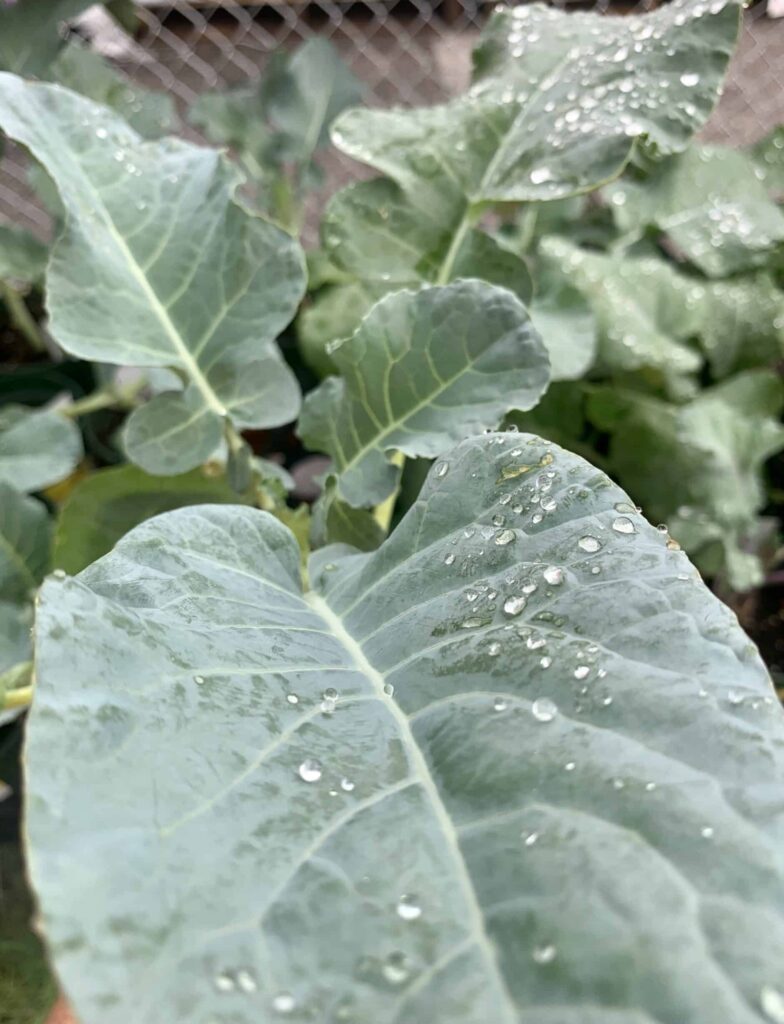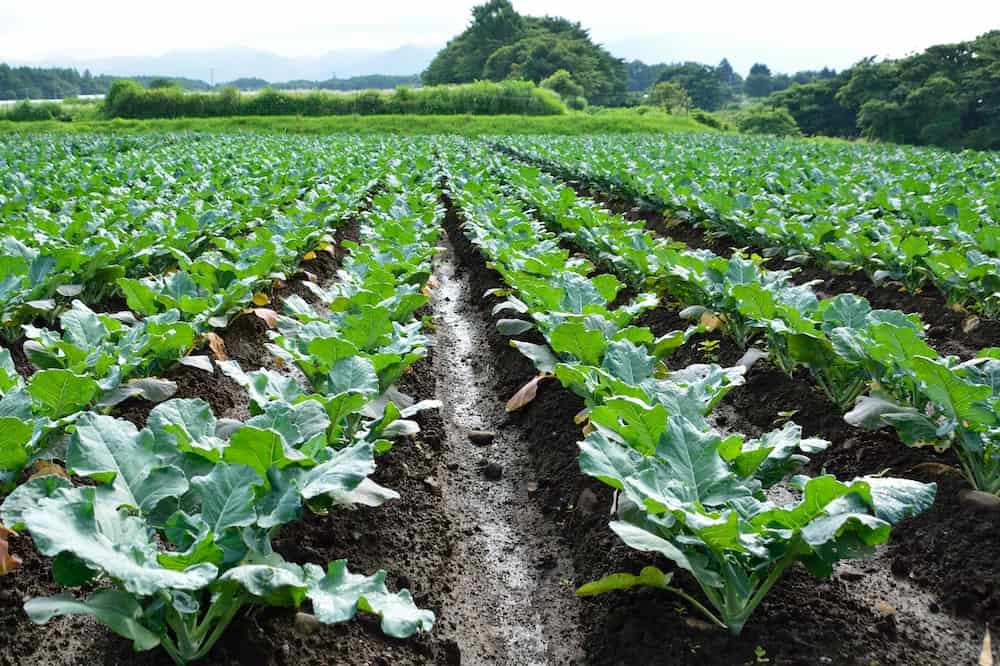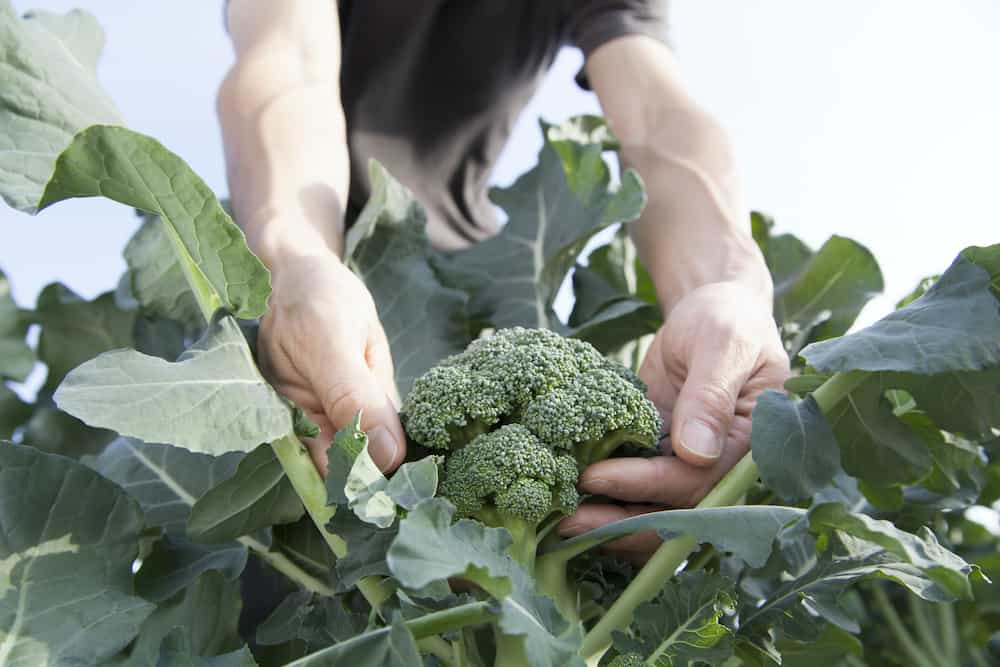How to Grow Broccoli Plant – Broccoli is a healthy and delicious vegetable, and if you have space in your garden, we highly recommend you try growing broccoli for yourself.
Unless you have a very short growing season, you will get two harvests each year. That is why it’s called a biennial plant.
Keep reading to get a good understanding of the broccoli plant, including how, when, and where to grow broccoli.
Broccoli Plant Basics
As part of the cabbage family, broccoli is a rich source of vitamins and minerals, so it is worth growing broccoli for its nutritional content alone. The scientific name is Brassica oleracea var. italica.
It’s a cool season vegetable. Broccoli grows best when daytime temperatures are in the 60’s. Therefore, it’s best to plant in the spring or fall.
How Do Broccoli Plants Grow?
Unlike cool season root vegetables, such as carrots, broccoli plants grow upright, above ground. Their leaves are medium green, and some cultivars have a slight blue cast. They are often used in edible landscaping, with Romanesco varieties being especially popular for ornamental plantings.
They have yellow flowers you can harvest for eating before the flowers bloom. Their root system doesn’t grow very deep into the ground, so you should be careful not to disturb the soil around the plant’s base.
How Big Do Broccoli Plants Get?
Broccoli plants will usually grow to be around 2 – 3 feet tall and roughly 2 – 3 feet wide. Their size will depend on how far apart you’ve spaced your plants. As with most plants, the more space you give them, the bigger they will get.
Other factors that will affect the size of the plant and the broccoli heads are: climate, location you plant, broccoli variety, season, soil nutritional quality, and fertilizer.
How Many Heads of Broccoli Do You Get From One Plant?
It will yield one large head per plant. Once harvested, it will produce several smaller side flower heads over the next few weeks.
How Long Does Broccoli Take to Grow?
Fortunately, broccoli grows fairly quickly but will vary on the conditions and on the variety you have.
If you’ve grown broccoli from seed, you can expect a harvest around 70 to 100 days after planting. On the other hand, if you’ve grown it from transplants or starts, the harvest will come in around 55 to 85 days.
Planting Broccoli
Broccoli is known as a cool season crop, meaning high, mid-summer temperatures can stunt its growth. Thus, your best off planting broccoli before or after the hottest part of the year.
When to Plant Broccoli?
As a hardy, biennial plant, it can be grown twice a year. Before you plant, add nutrient-dense compost and organic matter, around 2 – 4 inches, or a thin layer of well-aged manure into the soil.
It will thrive in well-draining, rich soil. It prefers neutral soil with pH around 7. It’s important to plant at the correct time, depending on when you want to harvest it.

Summer Harvest
For a summer harvest, you’ll need to start broccoli seeds indoors around six weeks before the last spring frost. If you’re sowing the seeds outdoors, you can do so around two or three weeks before the last frost.
Broccoli seeds are capable of germinating in soil temperatures as low as 40 degrees Fahrenheit, but they will thrive in warmer soil.
If you think your soil is too cold, it may be better to start the seeds indoors. If you’re buying broccoli transplants from the garden center, you can generally plant them right away. Garden centers will grow it at the right time and sell them to you when they’re ready to plant.
Winter Harvest
For winter harvest, start your broccoli seeds in late summer, ready to plant in the garden in autumn. If you have a short season, start the broccoli in summer, around 85 to 100 days before you expect your first winter frost. In colder climates, this will be sometime in the fall.
Where Should You Grow Broccoli?
As with most all plants that produce food, you should place it in a site with exposure to full sunlight for a minimum of 6 – 8 hours per day.
Broccoli growing with less sunlight than it needs can end up taller and thinner than it should be, with smaller heads than usual. It will thrive in moist, fertile soil that drains well.
The ideal soil is slightly acidic, between the pH of 6 or 7, but it can tolerate slightly alkaline soil. If you live in an area with poor sandy soil, you should add aged compost to supplement the soil with nitrogen.
To help reduce disease, you should avoid planting broccoli in the same location more than once every three or four years. Amend the soil with compost after harvesting which will help add nutrients and improve drainage.
Broccoli Plant Spacing
Spacing depends on whether you want to harvest one large, central head, or several smaller central heads. For one large central head, space broccoli plants 3 feet between each row and plant your broccoli seedlings around 18 to 24 inches apart within the rows.
For smaller heads, you can plant as close as 12 inches apart. Closer spacing and harvesting secondary heads offer a greater yield overall.
If you are sowing seeds directly into the ground, you should plant them around three inches apart. When they start growing, you can begin to thin them out by pulling the smaller plants first.
Broccoli Planting Depth
Broccoli seeds should be planted between a quarter-and-a-half inch deep into the soil, while transplants should be planted just a little deeper than they were originally. Although, if you have a particularly leggy transplant, you can plant it right up to the first few full leaves.
Planting a bit deeper will help to make it stronger and more able to support the weight of the broccoli head when it comes in.

Broccoli Plant Care
Now that you’ve found the ideal spot for planting and your broccoli is in the ground, how do you care for it?
Watering Broccoli Plants
It’s important to know how often to water. Much depends on your area and how dry it is. You should water the broccoli often since they grow best in moist soil.
They need one to 1.5 inches of water per week and ensure to water the plants around their base. That is especially important when the broccoli heads are developing since if the heads get wet, they can rot.
You can help keep the soil moist and cool by covering the area below the plants with untreated grass clippings or organic mulch.
Feeding
Use a low-nitrogen fertilizer around three weeks after transplanting. If you notice that your broccoli plant is starting to turn yellow, you can add some blood meal to the area below the plants. After you’ve harvested the central head of broccoli, you can help encourage side-growth production by scratching in aged manure or fish meal around the base.
Temperature
Broccoli thrives in temperatures between 45 and 75 degrees Fahrenheit but can tolerate temperatures as low as 20 degrees. If you’re worried about your broccoli surviving through a cold snap or you’ve planted late, you can purchase floating row covers from your local garden center.
Floating row covers can increase the air temperature by around four to eight degrees. Broccoli can freeze and recover fully, but you shouldn’t expose it to constant freezing and thawing.
Freezing temperatures can cause the buds to turn purple and make the heads softer, but it will still be edible.
Weeding
Pull any weeds as soon as you see them. The broccoli plant has a short root system that would be disturbed by pulling larger, more-established weeds. Mulching the area around the plant’s base will also help to keep weeds at bay.
Disease Prevention
The best way to grow healthy plants is to start with healthy soil. Broccoli is susceptible to cabbage family diseases, so, as mentioned, don’t grow broccoli in the same area twice. Cut back and destroy infected plants immediately to help prevent spread.
Pest Protection and Removal
Keep an eye on your broccoli plants for signs of pests. You will likely have more pests in planting beds than in containers. Row covers can help keep pests at bay, but you shouldn’t use them when it’s already hot outside.
Some of the most common pests you may come across are:
- Cabbage Worms
Cabbage worms will tunnel into the head of your broccoli and any nearby cabbage and cauliflower. If you see cabbage worms on your broccoli plants, you should pick them off and kill them. Some people like to plant marigolds in between their broccoli plants to help keep away moths responsible for laying the worms.
- Cabbage Root Maggot
Cabbage root maggots will tunnel down into the roots of your broccoli, causing it to wilt and eventually die. You can help prevent them by spreading a small amount of diatomaceous earth around the plant’s base when they’re seedlings.
You can also introduce natural predators of root maggots, such as Heterorhadditidae, Steinernematidae nematodes, and rove beetles.
- Cabbage Loopers
Another pest that enjoys feasting on broccoli is cabbage loopers, also called measuring worms. They are capable of completely defoliating broccoli plants.
In the spring, these small white and yellow moths emerge. They are active at night. They lay their eggs on the underside of the leaves and hatch in 3 – 10 days. As caterpillars, they will feed on the plants for 21 – 28 days.
- Cabbage Aphids
You can remove aphids from the underside of the leaves by using a hard stream of water. Make sure you do this early on in the day or just before sundown.
If you do it under the full sun, the water droplets on the leaves will magnify the sun and cause burn damage.
Harvesting Broccoli
Harvest broccoli heads when they are still green and tight, along with around five to six inches of stem or stalk. Cut it at an angle and leave the rest of the plant as it is, to encourage further side-growth.
The best time to pick these crops is when the main head is 4 – 6 inches in diameter. The late side shoots will grow smaller, to 1 – 2 inches wide. Harvest when the flower buds are tightly closed. It will be past its peak once the yellow petals start to show.
Growing Broccoli in Containers
If you don’t have space in your garden or a garden bed, you can grow broccoli in containers. Growing broccoli in pots is also a way for a garden if you have limited space, such as a small patio or deck.
It’s best to plant one broccoli plant per container. At a minimum, the pot should be 4 – 5 gallons with 18 inches in diameter. Depending on the season, you can plant broccoli seeds directly in the container or you can transplant them as starts.
Growing broccoli this way gives you a little bit more flexibility because if the pot is portable and not too heavy, you can move it around based on the sunlight, temperature, rainstorms, etc. You can buy a planter saucer with wheels. Alternatively, you can create a rolling base for a larger pot so you can easily move it around.
Can You Eat Broccoli Leaves?
Most people think only of the florets. However, you can eat the leaves of a broccoli plant steamed or raw. Eat them in a salad like you would other dark leafy greens. You can pick larger leaves and smaller ones.
Can You Eat Broccoli Stalks?
Wash the stems like you do the florets and leaves, and you can eat them raw or cooked. They are high in fiber. Slice them thinly and cook them with eggs or add them to a casserole. The great thing about growing broccoli plants is you can eat all of it.
Best Broccoli Growing Practices
Now you know how to grow broccoli, you need to decide how much of it you want and find a space to grow it. You can plant broccoli at least twice a year if your season allows it, but always make sure it gets full sunlight and plenty of water.
Mulching the area below the plant helps keep the soil moist and cool and control or prevent weed growth.
If you want to encourage second and third harvests, remember to cut it at an angle. If you have more yield than you can eat, blanch it before freezing for up to one year. There’s nothing like garden-fresh broccoli.

